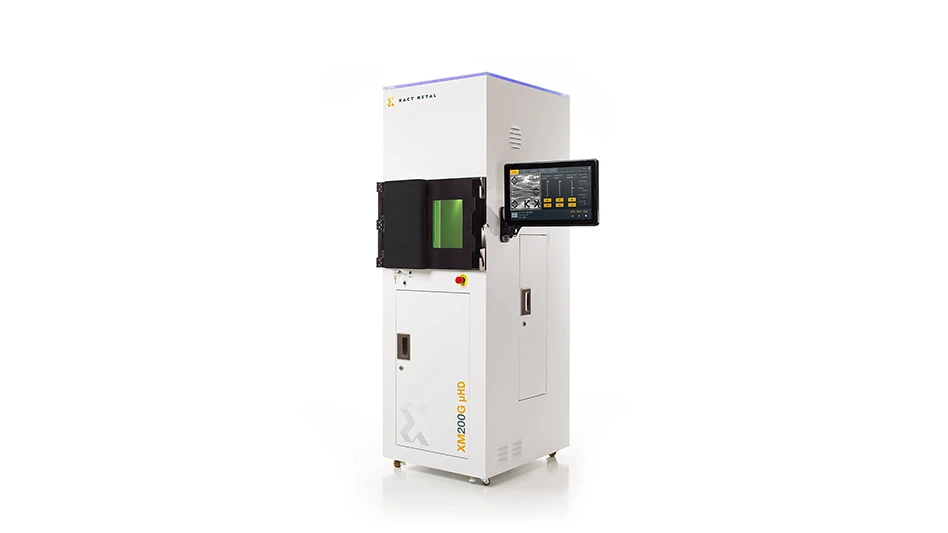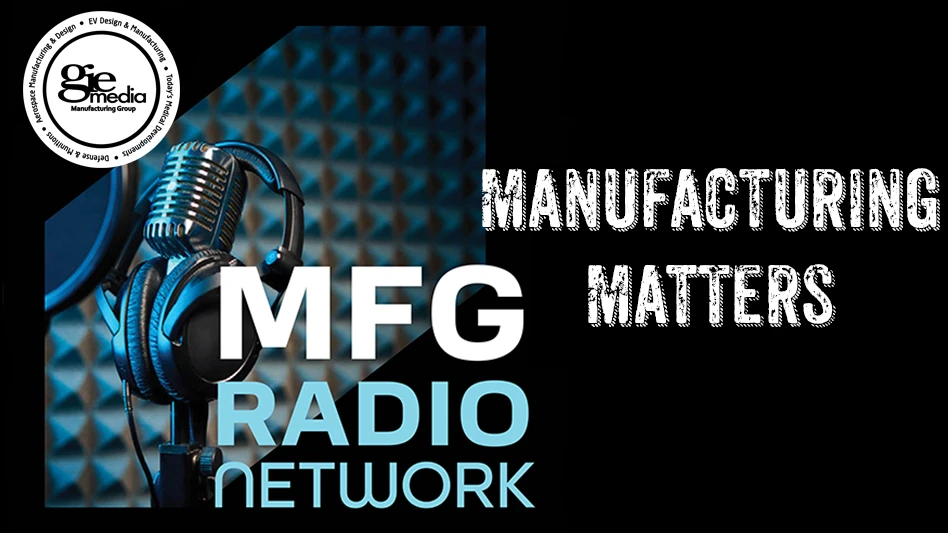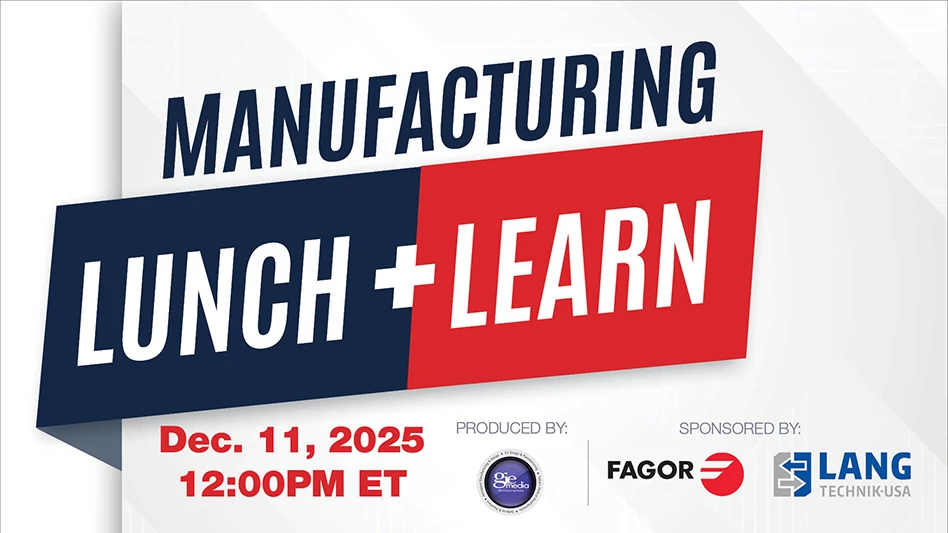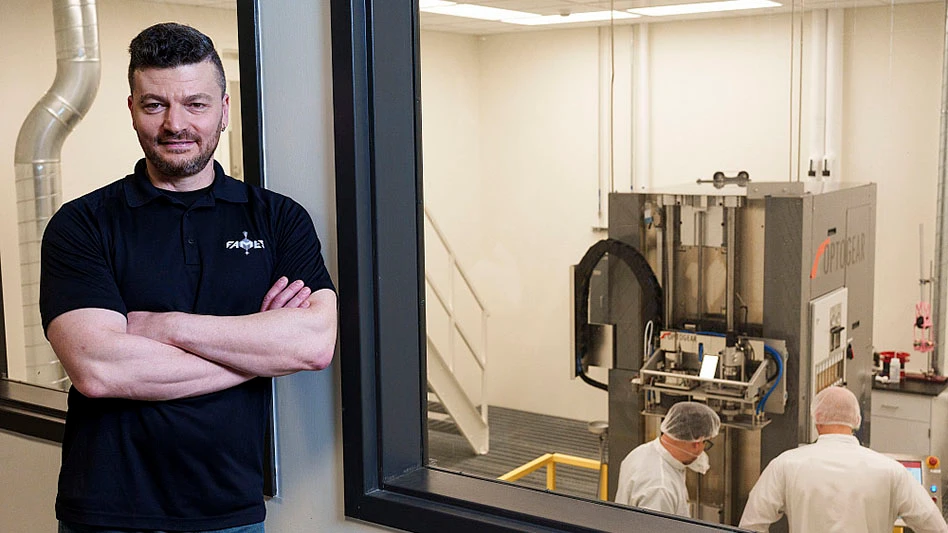
HMP Industries, a screw machine shop in Ansonia, CT, is looking to put itself on the map in the field of medical device manufacturing. HMP is making its mark by upgrading its bank of more than 100 conventional machines to stateof- the-art CNC equipment, including a variety of multi-axis CNC Swiss-type lathes, the machine tool of choice for many medical device applications.
This new focus on higher-end medical device products, and the acquisition of the sophisticated equipment that is needed to make these components, forced HMP to reevaluate their programming approach in order to compete in this new field. To be competitive in the medical device manufacturing arena, HMP management found that the company had to be able to quote, program and set-up parts much faster.
To solve this problem, HMP turned to PartMaker CAD/CAM from PartMaker Inc., a division of Delcam Plc. Implemented in the summer of 2006, the PartMaker system purchased by HMP handles the programming of the company's range of CNC equipment including its 9-axis Tsugami BU20SY, Star SR-20R, Star SB-16, Kia LMS Turn- Mill Center, and Fadal Mill.

The Tsugami BU-20SY's working area.
"Using PartMaker has definitely opened opportunities to us in our medical device business because the software allows us to quote and program faster," says HMP President Steve Whitman.
"This means we can deliver faster and can meet the short lead times dictated by our medical customers."
MAKING THE MOVE
"As the ‘big box' stores became more dominant and outsourced manufacturing to lower cost markets overseas, we needed to look to other growing markets. We identified the medical market as a prime target because of its growth and its need for the precision machining skills we developed over the years for other industries," explains Whitman.

An array of parts manufacturing on HMP's bank of CNC Swiss-type lathes.
Making this transition required HMP to look closely at a number of its manufacturing processes, from job quoting through part programming, to machine set-up of new jobs. The move to medical introduced new materials and parts with more intricate and complex geometries; these parts also require tighter tolerances as well as shorter lead times for both quotes and finished product deliveries.
FROM TRIAL AND ERROR TO CONFIDENCE
Prior to implementing PartMaker, HMP's technical staff had been programming the CNC Swiss as well as the other CNC machines through a combination of manual programming techniques, and "cutting and pasting" output from other less sophisticated CAM systems that were ill-suited to handle the programming needs of their Swiss machines.
Going to PartMaker has improved productivity by speeding programming time, reducing machine set-up time, and reducing scrap. Gary Svenson, the chief CNC programmer at HMP, estimates that using PartMaker has reduced the amount of time it takes him to program a part by about 70% from his previous programming method. Additionally, because PartMaker allows him to visually prove out a part on screen with its array of process verification tools, he has also been able to reduce the amount of time it takes to set-up new jobs. Svenson estimates PartMaker has reduced machine set-up time by about one third.
"When you are programming by hand, you have to spend a lot of time dry running a part on the machine during setup. With PartMaker, this time is greatly reduced as you know what to expect because you see the part being simulated on screen," says Svenson.


Animated graphics that are simulated machined models generated by PartMaker machining simulation module.
Because HMP is now able to program parts more accurately off-line before sending programs to the machine, not only do they spend less time in setup, but they are also producing much less scrap. Scrap is no small issue when making medical parts, due to the cost of the materials used in making these components.
"The software has been very helpful in programming some of our more complicated medical parts with their more complex geometries. This was especially important when you take into account the cost of the material for these parts, which is titanium or 17-4-PH stainless steel. PartMaker has really reduced the amount scrap we make, which has been a big cost savings," adds Svenson.
BETTER MACHINE UTILIZATION
PartMaker has also allowed HMP to better utilize both the advanced capabilities of their CNC Swiss-machines as well as make better use of their Swiss capacity.
PartMaker allows HMP to use the fullest extent of its machine's numerous axes in an intuitive manner through its patented Visual Programming strategy. This approach makes programming the on-board milling and turning capabilities of machines much easier. The software breaks a complex part into individual face windows; each window contains features being machined in a particular plane. For example, in one window, all turning operations on the machine's main spindle are programmed graphically. In another window, milling on the machine's C-axis with a horizontally oriented tool may be programmed, while in another a group of features on the machine's Y-axis with a vertically oriented tool may be programmed.
Once features have been created and correctly ordered, PartMaker lets the user quickly synchronize the machine's numerous programming axes to achieve the best possible cycle time. The software allows this by deploying a patented Visual Synchronization technology that allows the user to choose a picture displaying the synchronous strategy that he wants to use, such as cutting with one tool on the main spindle while another tool is cutting on the sub-spindle.


A simulation of the Tsugami BU-20SY shown in PartMaker's new Full Machine Simulation module.
When the synchronization strategy has been set, the software displays a visual time study, showing the amount of machining time being spent on the main spindle, the amount of cycle time on the sub spindle, and the overall cycle time incorporating overlapping machining time. The results are shown in the form of a histogram that clearly indicates where additional opportunities for time savings exist. If the programmer has tried to synchronize operations in a manner his machine cannot handle, the software will point out the error before allowing him to proceed.
Once synchronization is complete, the programmer can simulate the entire machining process in a graphical 3D machining simulation to ensure that the process will run error-free and that the part will look correct. Once satisfied with the machined model of the part, with one mouse click, the user generates an NC program by choosing the post processor for the machine that will be cutting the part.
QUOTING: MORE SCIENCE, LESS ART
At HMP, PartMaker's role typically starts long before a part is even ordered by a customer because the company also relies on the system as a quoting tool.
PartMaker employs knowledgebased machining technology to store HMP's specific experience with respect to tooling, feeds and speeds, and repetitive process information in order to automate programming. As the software learns from HMP's experience, it is able to incorporate the knowledge gained on previous jobs to make quotations more accurate.
In certain cases, when HMP uses the software to quote a job and is awarded the part, most of the part is already programmed.
"With PartMaker, when we use it to quote, if we get the job, it is so much easier to just open the file we used to quote, post process the program, and we're done," notes Robert Mozdzer, a process engineer at HMP.

Explore the July 2007 Issue
Check out more from this issue and find your next story to read.
Latest from Today's Medical Developments
- GrindingHub Americas launches in 2027 in Cincinnati, Ohio
- Methods Machine Tools now offers the Nakamura-Tome NT-Flex
- Battelle awards $900,000 in STEM education grants to Ohio schools
- #55 Lunch + Learn Podcast with KINEXON
- Starrett and Gerstner offer limited edition, American made 1950s replica wooden machinist tool chests
- EMCO’s UNIVERSALTURN 50: The new benchmark in universal turning
- Archetype's Expertise for Equity accelerates early-stage innovation
- Stratasys expands its AM solutions with Tritone's cutting-edge technology





